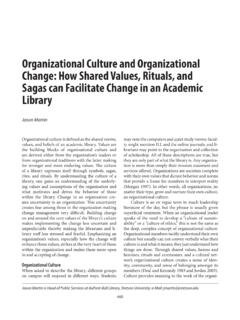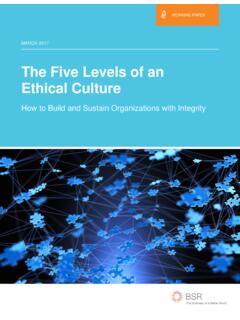Transcription of ORGANIZATIONAL RACE EQUITY TOOLKIT
1 123 ORGANIZATIONAL RACE EQUITY TOOLKIT 1 TABLE OF CONTENTS FOREWORD _____ 3 ACKNOWLEDGMENTS _____ 4 EXECUTIVE SUMMARY _____ 5 INTRODUCTION _____ 6 REJI Vision _____ 6 About JustLead Washington _____ 6 REJI Acknowledgments & Commitments _____ 7 PART 1: UNDERSTANDING RACE EQUITY _____ 10 What is Racial EQUITY ? Why Does It Matter? _____ 10 The Difference Between Equality and EQUITY _____ 10 Addressing Race EQUITY at The Five Levels _____ 11 Systems Thinking & the Structural & Historical Context of Racism _____ 12 Connecting Race EQUITY and Anti-Poverty Work _____ 13 Understanding Implicit Bias & Social Cognition _____ 14 PART 2: GETTING READY: PREPARING FOR ORGANIZATIONAL RACE EQUITY WORK _____ 15 Know where you are going, and why.
2 _____ 15 Build your team. _____ 15 Identify common frameworks and language. _____ 16 Understand your ORGANIZATIONAL culture . _____ 16 Get ready to talk about race. _____ 17 Expect discomfort. _____ 18 Prepare for change. _____ 18 Gather data. _____ 20 PART 3: CONDUCTING AN ASSESSMENT _____ 21 The REJI ORGANIZATIONAL Assessment _____ 21 2 PART 4: GOING DEEPER: STRATEGIES & BEST PRACTICES TO CREATE A MORE EQUITY -MINDED ORGANIZATION _____ 25 Securing an ORGANIZATIONAL Commitment _____ 25 Creating More Equitable ORGANIZATIONAL culture _____ 26 Recruiting, Hiring, & Retaining a Diverse Workforce _____ 35 Developing Accountability to and Partnership with Communities of Color _____ 41 Applying an Anti-Racist Lens to Programs, Advocacy, & Decision-Making _____ 49 CONCLUSION _____ 54 REJI VISION _____ 54 Appendix: ADDITIONAL TOOLS FOR APPLYING AN EQUITY LENS _____ 55 Tool A: REJI ORGANIZATIONAL EQUITY Plan Worksheet _____ 56 Tool B.
3 REJI Racial EQUITY Impact Assessment _____ 59 Tool C: Community Agreements for Productive Conversations on Race _____ 62 Tool D: ORGANIZATIONAL EQUITY Plan Sample Legal Services NYC _____ 64 Tool E: Systems Thinking and The Iceberg Model _____ 67 Tool F: Race EQUITY Tool Columbia Legal Services _____ 70 Tool G: Debiasing Techniques The Law Office of William Kennedy Race EQUITY Project _____ 74 GLOSSARY _____ 107 RESOURCE LIST _____ 114 REFERENCES _____ 116 3 FOREWORD June 2018 There is no such thing as race. None. There is just a human race - scientifically, anthropologically. Racism is a construct, a social it has a social function, racism. Toni Morrison Race It is a simple word with no intrinsic meaning.
4 It was originally a construct created by people who found need to dehumanize and dominate others. Throughout our national and state history, the construct of race has been woven into every legal, social, civic and economic institution and system with the singular purpose of perpetuating dominant cultural and economic control and subservience of others. Today, race is the variable that drives and perpetuates disparate treatment and disproportionate outcomes for individuals and communities of color across every relevant social and economic indicator. From wealth and poverty disparity, to disparate rates of law enforcement interaction, criminal justice and child welfare system involvement, incarceration and reentry, health outcomes, educational attainment, the provision of governmental services, the location of civic infrastructure, food deserts and environmental hazards, race is the single factor that predicts and perpetuates negative outcomes for individuals and communities of color.
5 As EQUITY & justice stewards, we have a duty to understand how the construct of race affects and infects law, justice and other systems in ways that disadvantage low-income people of color, and how it perpetuates privilege and advantage at all levels individually, interpersonally, organizationally, in communities and in society as a whole. Because each of us and the organizations within which we operate are inheritors of the biases, prejudices, and blindness to the pernicious ways in which that race operates, we must intentionally rethink, relearn and reprogram ourselves and our organizations to embrace race EQUITY and engage in our work employing a race EQUITY lens. As reflected in Goal One of the Access to Justice Board s 2018-20 State Plan for the Delivery of Civil Legal Aid in Washington State, our EQUITY & justice community is committed to doing this challenging work.
6 We just need the tools. To this end, the Office of Civil Legal Aid engaged JustLead Washington to work with our race EQUITY and justice community to develop this ORGANIZATIONAL Race EQUITY TOOLKIT . This critically important resource offers a wealth of information, ideas, resources, and strategies designed to help organizations develop critical capacities to guide both their internal operations and their external EQUITY & justice work. Regardless of your role (client advocate, community worker, volunteer program manager, program administrator, etc.,) we encourage you to use and help us improve this TOOLKIT to inform all aspects of your work. Jim Bamberger Jim Bamberger, Director Washington State Office of Civil Legal Aid 4 ACKNOWLEDGMENTS JustLead Washington is grateful for the many partners, funders, and contributors who have aided the development of this TOOLKIT .
7 The TOOLKIT has been underwritten and is offered as a resource to the community by the Washington State Office of Civil Legal Aid, with additional support from the Washington State Access to Justice Board and advice and counsel from the many Partners and volunteers who comprise the Washington Race EQUITY & Justice Initiative. Special thanks to consultants Aline Carton-Listfjeld and Ada Shen-Jaffe for contributing sections of the TOOLKIT , to Jim Bamberger from the Office of Civil Legal Aid for contributing the Foreword, and to the many reviewers and Partners from the Race EQUITY & Justice Initiative who volunteered their time. To view a full list of our REJI Partners, go to In addition, JustLead Washington is indebted to the many grassroots racial justice organizations and content experts whose work has laid the foundation for this TOOLKIT .
8 Our particular thanks to the Sargent Shriver National Center on Poverty Law, whose approach to leadership and EQUITY work grounds our perspective. Citations are included within and a Resource List provides links to many excellent organizations and websites referenced in the TOOLKIT if you would like to access valuable additional information. This TOOLKIT last updated 8/14 Werdell JustLead Washington, Executive Director Omid Bagheri JustLead Washington, Director of EQUITY & Community Partnership Licensing and Attribution JustLead s original work, covering text, charts, graphics, and tools within the TOOLKIT not otherwise attributed, is licensed under the Creative Commons Attribution-NonCommercial International License. To view a copy of this license, please visit This means that users can share, adapt, and distribute JustLead s material, provided that credit is given and use is non-commercial.
9 For commercial use of our content please contact Please also note: Users must also follow the copyright requirements and permissions for the organizations and individuals whose content is included and attributed within the TOOLKIT . Photos not otherwise attributed licensed from The TOOLKIT will be maintained and updated as a living document. If we have omitted or incorrectly articulated any attributions or licensing information please contact so that we can correct our errors as soon as possible. The most updated version of the TOOLKIT can be found at 5 EXECUTIVE SUMMARY The Washington Race EQUITY & Justice Initiative (REJI) began in 2015, when a volunteer team of advocates working within the civil, criminal, and juvenile justice systems organized to use their expertise and resources to respond to the structural racialization revealed by a (continuing) cascade of tragic racialized events.
10 They launched REJI to share resources and create a support infrastructure for race EQUITY and justice work. Now a coordinated statewide network, REJI is committed to supporting advocates, their organizations and community-based partner as they promote fairness and racial EQUITY within the law and justice systems. The REJI ORGANIZATIONAL Race EQUITY TOOLKIT aims to help its partner organizations apply a racial EQUITY lens to their operations, programming, workplace culture , governance, partnerships, and advocacy. The TOOLKIT guides you though several aspects of what it means to undertake race EQUITY work within an organization: Part 1 explores the basics of racial justice and racial EQUITY work, defining key terms and explaining foundational frameworks.




